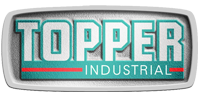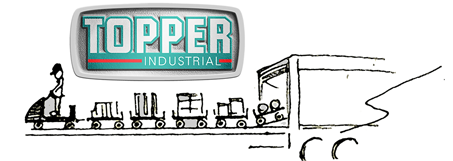Fork Truck Free (FTF) manufacturers are well-served with 5S workplace organization and standardization. It instills a five-step highly disciplined housekeeping technique, providing the “how to” for a manufacturer to clean-up the typically disorganized work area and ensure the success of lean manufacturing on the shop floor.
The 5 steps are:
- Sort through all items and remove unneeded items
- Set in order remaining items, set limits, create temporary location indicators
- Shine or clean everything and use cleaning as inspection
- Standardize the first 3 S’s by implementing visuals displays and controls
- Sustain the gains through self-discipline, training, communication, and total employee involvement
By reducing or eliminating fork trucks the capacity to experience and learn the basic 5S methodology is dramatically enhanced. Workers at a cellular level or across the enterprise can complete visual orders with a minimum waste of motion in the work area. The result is maximized value-added work, including point-of-use communications resulting in reduced scrap and rework.
Additionally, because the impetus for FTF is safety and efficient ergonomics, there is an improve quality of work life and a basis for continuous improvement. More than 50 percent of all new distribution centers have a statement requiring that all new lines will be FTF. The need for creative, innovation solutions is in direct proportion with the demands of complexity, kitting, and efficiency while increasing safety, reducing line side inventory, delivering parts accurately, and increasing quality.
Obviously, there is no greater concern than the safety, health, and lives of workers. Profits, while very important, are secondary to lives. The notions of safety and profitability are not mutually exclusive. Avoiding costly workers’ compensation costs, wrongful death and injury lawsuits, and reducing a wide variety of injury-related costs allow organizations to utilize resources to improve safety, productivity, product quality, and overall business competitiveness.
Forklift Safety Concerns
Training initiatives, meticulously reviewed safety protocols, and reviewed and revised standard operating procedures (SOPs) have not eliminated the dangers that forklifts present to manufacturers. After decades of systematic process improvements in the use of forklift operations in warehouses, distribution centers, and manufacturing plants, many companies, industry leaders, and politicians are concluding that forklift-free environments may be the only fail-proof approach to ensuring safety.
Skill attainment of 5S kaizen provides a clear understanding and application of the 4-step kaizen process for improvement using the Deming Cycle of continuous improvement: Plan, Do, Check, and Act. Those industrial manufacturers who have implemented 5S report that these methods quickly become the standard method for addressing improvement opportunities going forward. The 5S technique provides the “how to” to clean up the production and office areas that lets employees “see” for the first time the waste that is inherent to the process. This basic tool will become the first step for shop floor employees and operations managers to eliminate waste and streamline work areas.

Information submitted by Jillian Burrow, Marketing Manager for Topper Industrial

